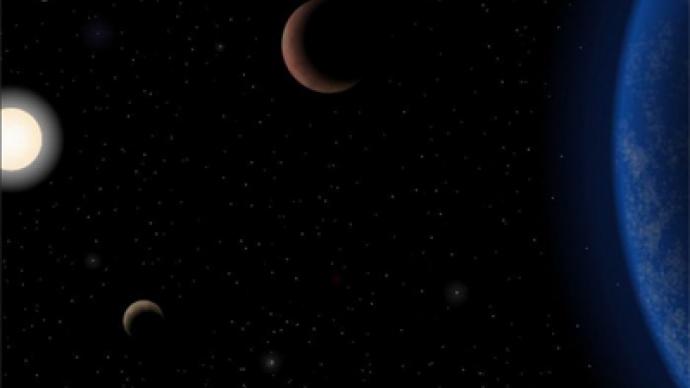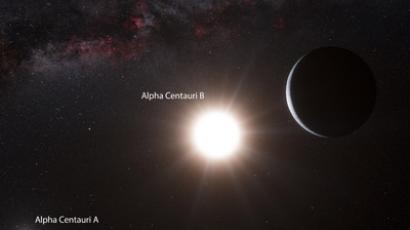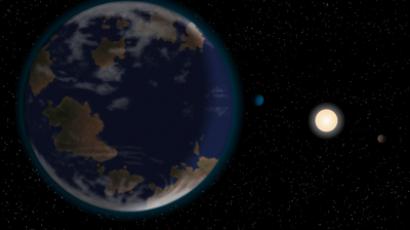A New Earth? Potentially habitable planet discovered orbiting nearby star similar to our sun

Astronomers have discovered that the closest Sun-like star, Tau Ceti, is orbited by five planets, one of which is in the “habitable range”. If its existence is confirmed, the planet could be the closest potentially life-harboring world to our own.
Tau Ceti, twelve light years away, belongs to the same G-type yellow main-sequence class as our sun, which is relatively rare – only one in 25 stars has the same properties.Its planets were detected not by direct observation, but by calculating the slight gravitational tug these as-yet-unseen planets exert on the orbit of their star. Previously, these star ‘wobbles’ could not be clearly separated due to a multitude of other factors, but scientists at several universities in the UK and the US, say they have cleared the 'noise' with sophisticated new techniques and have found five planets."This discovery is in keeping with our emerging view that virtually every star has planets, and that the galaxy must have many such potentially habitable Earth-sized planets. They are everywhere, even right next door," said a statement from Steve Vogt, of the University of California, Santa Cruz, who is the co-author of the discovery, due to be published by the reputable journal Astronomy and Astrophysics.One of the planets, tentatively designated HD 10700e, appears to be in the so-called “Goldilocks zone”, the relatively small corridor where temperatures are just right for water to remain liquid, and for life to possibly flourish. It is two to six times the size of the Earth, weighs five times as much, and orbits its sun every 168 days.Tau Ceti is three times as far away as the closest star system to our sun, Alpha Centauri. Earlier this year, astronomers confirmed that Alpha Centauri contains a planet, but with a temperature of 1,200 degrees Celsius it is unlikely to host life.Yet it is too early to believe that HD 10700e is an Earth-like paradise, waiting for us to arrive. It is not clear what it is made of, and what gases its atmosphere contains.Some scientists remain to be convinced it exists at all."They're really digging deep into the noise here," Sara Seager, an astronomer at the Massachusetts Institute of Technology, told Science magazine, referring to the techniques used by the scientists. "The astronomical community is going to find it hard to accept planet discoveries from signals so deeply embedded in noise."The astronomers behind the project themselves say the discovery may take as long as ten years to confirm, and insist they published the findings to attract others to studying Tau Ceti.But the existence of HD 10700e should be relatively easy to confirm, compared to other potential planet candidates. "Tau Ceti is one of our nearest cosmic neighbours and so bright that we may be able to study the atmospheres of these planets in the not-too-distant future," James Jenkins, of the Universidad de Chile and the University of Hertfordshire, said in a statement.There are currently 854 planets confirmed by observation outside our solar system, but only a few of those could potentially support life.













